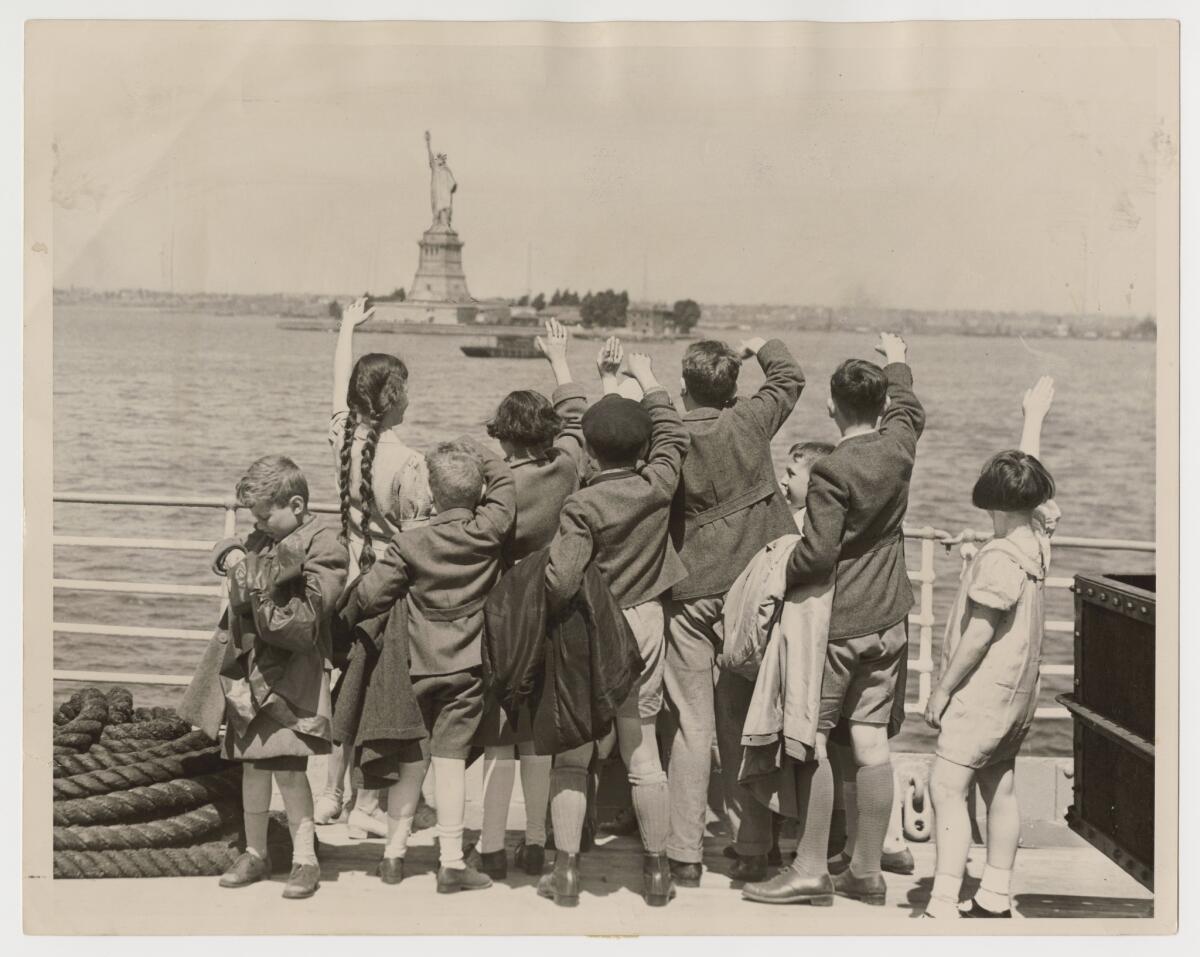Op-Ed: Bigotry stopped Americans from intervening before the Holocaust. Not much has changed
- Share via

A ruthless dictator unleashes terror on his own citizens. Those fleeing elicit sympathy — but encounter obstacles to entering the United States. Americans learn of mass killings, but their moral revulsion doesn’t easily turn into policy or military intervention. One thing remains consistent: America doesn’t want refugees, at least not of this ilk; those people aren’t welcome here.
Historians like me are wary of the adage that “history repeats itself.” But comparisons and analogies help us learn from the past, showing us how context matters and conventional wisdom deceives. To most Americans in 1945, “those people” meant “European Jews.” Today, they are Syrians, Congolese, Hondurans.
No visitor to the new exhibition “Americans and the Holocaust” at the U.S. Holocaust Memorial Museum in Washington, D.C., will walk away with conventional wisdom about World War II intact. In the 1930s, anti-Semitism rested comfortably within American ideologies of race, but this context, not widely acknowledged at the time, has now virtually disappeared from mainstream collective memory. Instead, America’s pre-Pearl Harbor isolationism is viewed as a mistaken but understandable disinclination to intervene in another European war, further tempered by the suggestion that Americans had only slight knowledge of Nazi depravity.
Museum visitors enter the new exhibit’s galleries in 1933 and walk through 12 years without the benefit of 80 years of hindsight. They see what Americans knew about events in Nazi Germany as they learned it. Public opinion (as documented by polls) and U.S. policy are revealed within that context.
America kept its doors closed to the people for whom they professed sympathy.
It is a sobering journey. Americans knew that something was dreadfully wrong in Germany. As early as 1932, and even more in 1933, popular magazines including Cosmopolitan, Time and Newsweek included major stories on the persecution of Jews in Germany and on Nazi governance. Hitler and Goebbels appeared on covers of Time in 1933, with Goebbels accompanied by a clear message: “Say it in your dreams — THE JEWS ARE TO BLAME.”
An imaginative crowdsourcing effort carried out by the museum uncovered no fewer than 15,000 U.S. newspaper articles documenting persecution published between 1933 and 1945. Newsreels told the same story.
Commentators who have the benefit of hindsight have criticized President Franklin D. Roosevelt for his refusal to intervene. In 1933, the U.S. ambassador to Germany recorded in his diary Roosevelt’s instructions: “The German authorities are treating the Jews shamefully and the Jews in this country are greatly excited. But this is also not a governmental affair.” It comes across as cold-hearted in retrospect, but Roosevelt understood his fellow Americans; they would not march to war — or even expend substantial public resources — to save Jews.
If this feels in any way familiar, consider what comes next. Even when 94% of polled Americans claimed to “disapprove of the Nazi treatment of Jews in Germany,” 71% of them opposed permitting any more than a trickle of German Jews to enter the United States — two weeks after Kristallnacht. Two-thirds of Americans opposed admitting refugee children in 1939.
America kept its doors closed to the people for whom they professed sympathy. This sentiment, shaped by racism, was nothing new, nor was it confined to immigrants. One need only cross the Mall to the National Museum of African American History and Culture to be reminded that in the 1850s white Northerners were as repulsed by the suggestion that emancipation would result in black migration northward as they were by the cruelty of slavery.
Anti-Semitism would remain central to American foreign policy even as the nation stared down Nazi Germany. The United States entered the war in Europe, of course, but Roosevelt was shrewd enough to cast the move as fighting fascism on behalf of democracy. The war was about preserving American values, not saving European Jews.
At war’s end, Americans encountered graphic, overwhelming evidence of what they had been hearing about regularly since the first news reports about the death camps in 1942. Films, photographs, articles and official documents laid out the horrific details of ghettos, concentration camps and gas chambers. Aside from the Jewish media, however, few of these accounts named the victims as Jews.
Terrible people those Nazis, those fascists. The survivors of their terror, however, the “displaced persons,” still could not be trusted to be our neighbors even if there was an orderly bureaucracy of refugee screening, documented here by a wall of letters and official forms.
The ring of familiarity impels us to ask chilling questions about our current moment.
James Grossman is the executive director of the American Historical Association. Twitter: @JimGrossmanAHA
Follow the Opinion section on Twitter @latimesopinion and Facebook
A cure for the common opinion
Get thought-provoking perspectives with our weekly newsletter.
You may occasionally receive promotional content from the Los Angeles Times.







